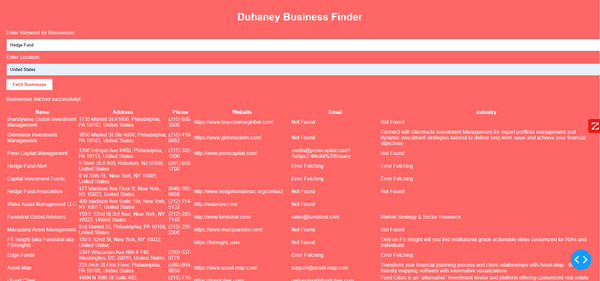SMARTGENIUSHUB LLC
Your AI Partner in Business
Email: Sales@smartgeniushub.com
Website: www.smartgeniushub.com
Valued Customer Bonus:
A-I Powered Application access: https://smartgeniushub.com/headquarter
Free E-Book download:https://smartgeniushub.com/bonusfreeebook !!!
Facebook Page where you will find real life use cases
https://www.facebook.com/smartgeniushubb
The world of business is constantly evolving, and with it, the tools and technologies used to analyze data and make critical decisions. As a data analyst for a leading multinational company, I was tasked with a crucial project - converting over 100 key business function dashboards from OmniScope Visokio to Tableau. This was no small feat, as these dashboards played a vital role in providing insights and driving the company's strategic goals. In this story, I will share my journey of converting these dashboards and how it enhanced our data visualization and analysis capabilities.
The Preparation Phase:
Before any major project, proper planning and preparation are key to its success. In this case, it was no different. The first step was to identify all the necessary requirements, sources, and queries for the dashboards. This involved working closely with various departments and stakeholders to understand their needs and the data they required for their decision-making processes.
I also conducted a thorough analysis of the current dashboards to determine which ones were critical and needed to be transitioned first. This helped prioritize the workload and ensured that the most important dashboards were not affected by any delays in the transition process.
Organizing and Monitoring Progress:
Once the preparation phase was complete, it was time to start the actual transition process. As the project lead, I was responsible for organizing and monitoring the progress of the transition. This involved creating a timeline and setting deadlines for each dashboard to be converted. It also required constant communication with the team members responsible for the technical aspects of the transition.
One of the biggest challenges during this phase was ensuring data integrity. The data from OmniScope Visokio had to be accurately transferred and validated in Tableau to ensure that the dashboards remained reliable and provided accurate insights. This required a meticulous approach, and I worked closely with the technical team to conduct preliminary and subsequent validations to ensure the data was consistent throughout the transition.
Stakeholder Engagement:
One of the most critical aspects of this project was stakeholder engagement. The success of the transition depended on the cooperation and support of various departments and individuals within the company. To ensure their buy-in, I conducted interviews with key stakeholders to understand their needs and gather essential insights. This helped me tailor the dashboards to their specific requirements and gain their approval for the transition.
Additionally, I organized workshops and training sessions to familiarize stakeholders with Tableau and its capabilities. This helped them understand the benefits of the transition and how it would enhance their data analysis and decision-making processes.
Keeping Up with Routine Updates:
As with any technology, it is essential to keep it up to date with the latest updates and features. This was no different for Tableau, and I made sure to incorporate routine updates into our transition plan. This not only kept the dashboards current and relevant but also aligned them with the company's strategic goals.
The continuous updates also provided an opportunity to further enhance the dashboards and incorporate new features that were not available in OmniScope Visokio. This helped us stay ahead of the curve and provided our stakeholders with cutting-edge data visualization and analysis capabilities.
In conclusion, the transition from OmniScope Visokio to Tableau was a significant project that required meticulous planning, organization, and stakeholder engagement. Through my leadership and the hard work of the technical team, we successfully converted over 100 critical business function dashboards, enhancing our data visualization and analysis capabilities.
This project not only improved the efficiency of our data analysis processes but also provided our stakeholders with more comprehensive and accurate insights, enabling them to make more informed decisions. The continuous updates and alignment with the company's strategic goals ensured that the dashboards remained relevant and valuable to the organization.
As a data analyst, this project was a testament to the ever-evolving landscape of business and the need to embrace new technologies to stay ahead. The experience of converting these dashboards has strengthened my skills and knowledge in data analysis and project management, making me a more valuable asset to the company.
In the end, this project was not just about converting dashboards; it was about driving innovation and progress within the company and utilizing technology to its fullest potential. I am proud to have been a part of this journey and look forward to many more exciting projects in the future.
Thank you for being a part of the SmartGeniusHub community. We value your feedback and look forward to helping you achieve even greater success. Get started today and enjoy the free e-book on us! Have a brilliant day!
Unlocking Your Thoughts: Exploring What's on Your Mind with SmartGeniusHub
Dear Creative Minds,
Here are the seven key summary points encapsulating your transition project:
- Platform Transition: Successfully transitioned over 100 critical business function dashboards from OmniScope Visokio to Tableau.
- Enhanced Capabilities: The transition resulted in enhanced data visualization and analysis capabilities for the business functions.
- Preparation Phase: A meticulous preparation phase was undertaken, identifying all necessary requirements, sources, and queries before the transition.
- Data Integrity: Monitored the transition's progress, conducting preliminary and subsequent validations to ensure data accuracy.
- Stakeholder Engagement: Key to the process was active stakeholder engagement, achieved by conducting interviews and securing necessary approvals.
- Dashboard Maintenance: Ensured the dashboards remained up-to-date, aligning routine updates with strategic company objectives.
- Overall Efficiency: The transition led to better data insights and efficacy, supporting core business functions more effectively.

Best regards,
Rohan Duhaney
